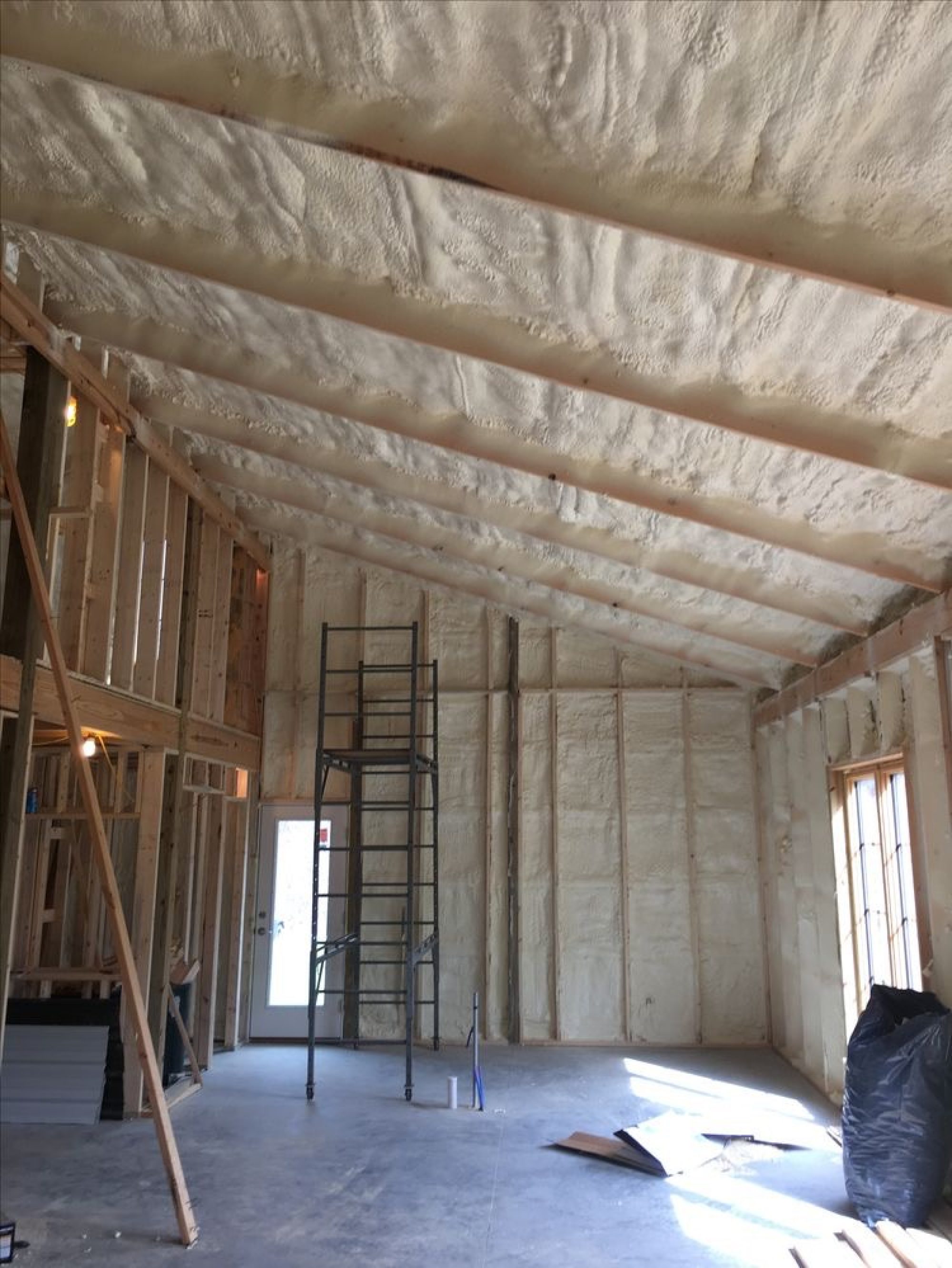WHAT:
Spray Polyurethane Foam Insulation is a two-component, low density system designed for commercial and residential insulation applications. Currently, we use a closed-cell Polyurethane Foam that yields the highest R-value available on the market today. Spray foam can fully insulate a home or building, as well as seal it from air and moisture infiltration, resulting in a more efficient structure with lower energy bills. Spray foam can also strengthen the walls and roof of a home or building, as well as protect it from airborne particulates and mold.
BENEFITS:
Benefits of Spray Foam Insulation:
- Prevents air and moisture intrusion
- Helps improve comfort by reducing drafts
- Reduces the amount of heat gained or lost between in and outside
- Can significantly lower energy bills
- Strengthens the building envelope and even structural integrity
- Doesn’t sag, droop, or lose performance capabilities over time
- Helps keep out dust, pollen, and bugs
- Reduces and/or eliminates ice dams
- Improves indoor air quality by reducing air infiltration
- Creates a quieter indoor environment
Spray foam is a great choice if you’re seeking a high-performance insulation system with maximum benefits. Our happy spray foam customers report fewer temperature swings between rooms, quieter indoor environments, and better moisture management throughout their homes and buildings.
PROCESS:
Spray Foam Insulation is a two-component system where the two chemicals combine and cause a chemical reaction that expands the foam to fill almost every crack, void, crevice, and building cavities to provide an efficient, insulating barrier that also reduces air and moisture transfer. The result is a durable, permanent seal that insulates well and improves the overall structural integrity of surface it’s applied to. Our installers are careful to properly prepare the areas where the spray foam will be installed to ensure that the process is clean, correct, and safe. Spray foam is most often installed in new construction homes and buildings when the walls have not yet been covered by drywall, however, it can also be retrofitted in existing homes and buildings and is an especially common choice for insulating and reinsulating attics in our cold Minnesota climate.
OTHER THINGS TO CONSIDER:
Though typically spray foam insulation is more expensive to install when compared to fiberglass batts, the benefits are noticeable and tangible. Unlike fiberglass batts, which allow air and moisture to easily pass through, spray foam provides a sturdy air and moisture barrier that protects from unwanted drafts and moisture issues. Customers also report less dust, lower utility bills, and a quieter indoor environment.
